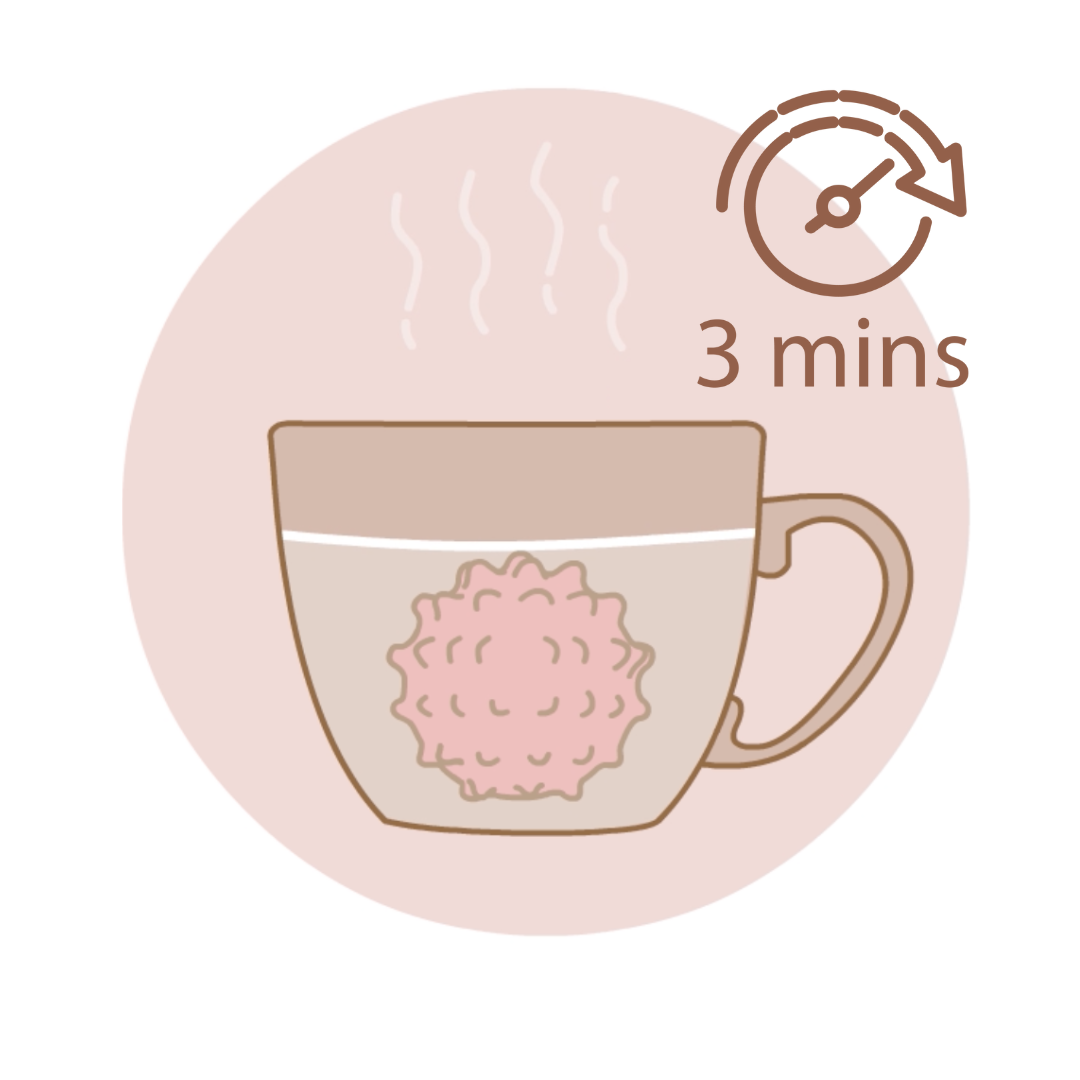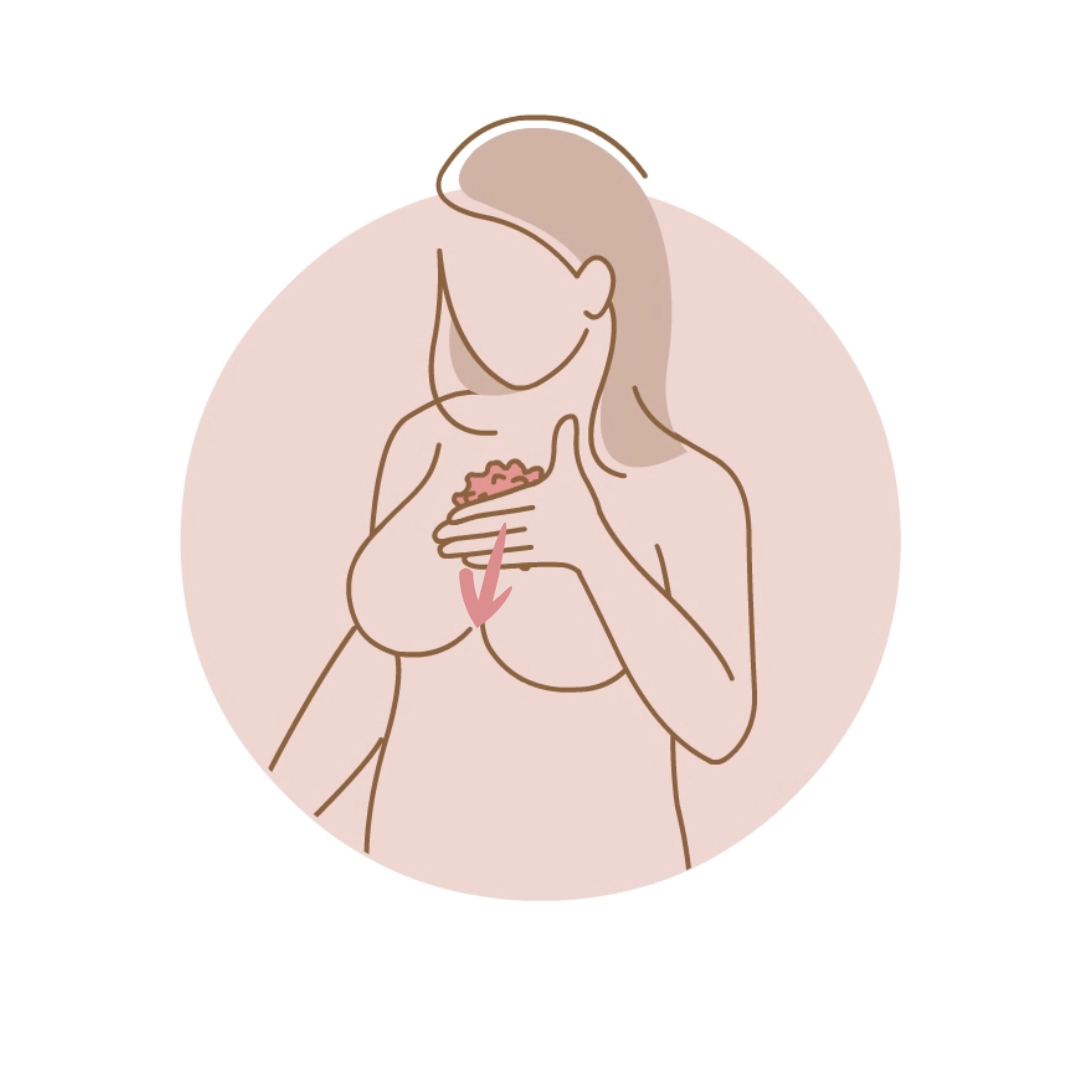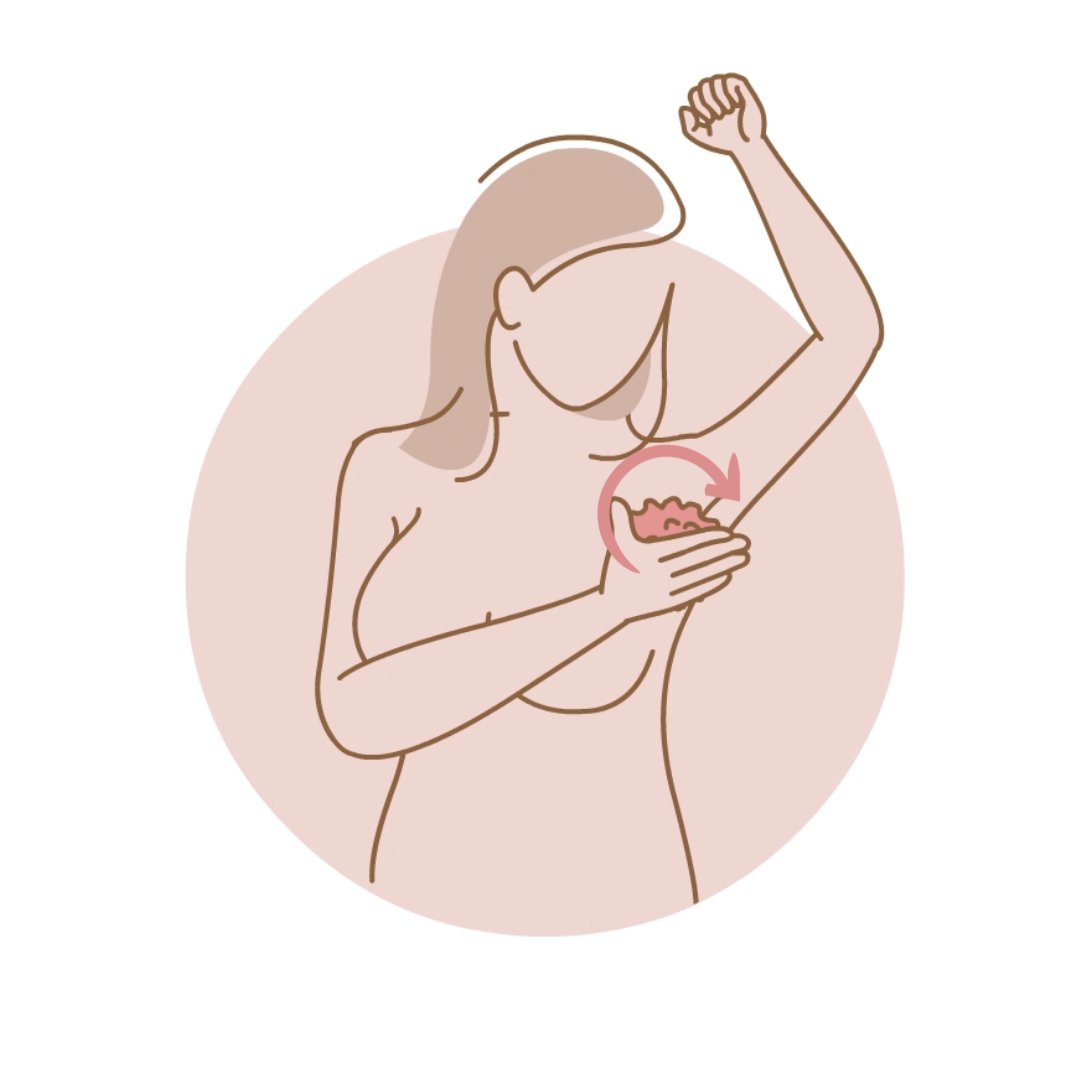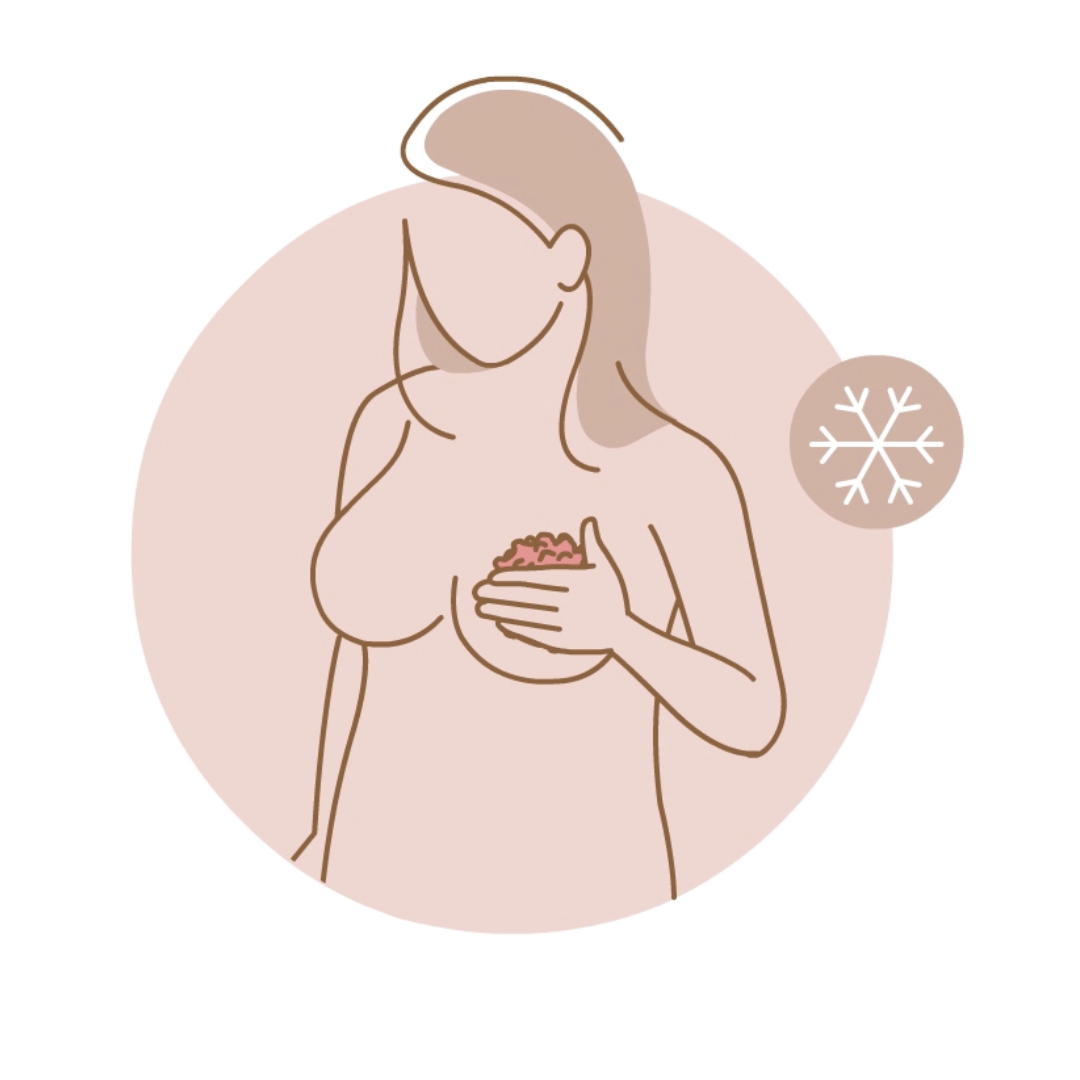Be sure to use only gentle pressure when massaging breast tissue to prevent further inflammation or trauma.
Blocked Milk Ducts Instructions
Before breastfeeding or pumping:
Step 1: Heat Lactamo by submerging it in a cup of hot water for 3 minutes (Note: this can be as hot as desired depending on need, ranging from luke warm to boiling) OR placing it in a conventional steam steriliser for one cycle.
Roll it between your palms for 10 seconds to make sure it’s not too hot.
Note: Do not put Lactamo in a microwave.
Step 2: Roll Lactamo down your breastbone (the middle of your chest) 4 - 6 times.
Gently stimulating the chest area may encourage the flow of lymphatic fluid back to the bloodstream.
Step 3: Roll Lactamo under your armpit in a circular motion 4 - 6 times.
You have multiple lymph nodes in your armpits. Massaging this area may stimulate lymph flow and help drain swelling in your breast tissue.
Step 4: Roll Lactamo over your breast in an upward motion towards your armpit.
This may help drain the extra fluid in your breast and reduce swelling and inflammation, especially if a milk duct has become inflamed or you have early-stage mastitis.
To address early-stage mastitis, spend more time on this step.
Before and/or during breastfeeding or pumping:
Step 5: Roll your heated Lactamo over your breast towards your nipple for a few minutes, taking care to remain focused on the quality of your baby’s feeding and not disrupt their attachment to your nipple.
Keep the pressure very gentle.
Gentle breast massage during feeding or pumping may aid milk flow.
After or between breastfeeding or pumping:
Step 6: You might like to gently place a cooled Lactamo on your breast to soothe and help reduce the inflammation and associated pain/discomfort.
Avoid compression or massage at this stage.
Note: whilst lumps in breast tissue may commonly present as a part of breastfeeding, if in doubt please consult your healthcare professional.















